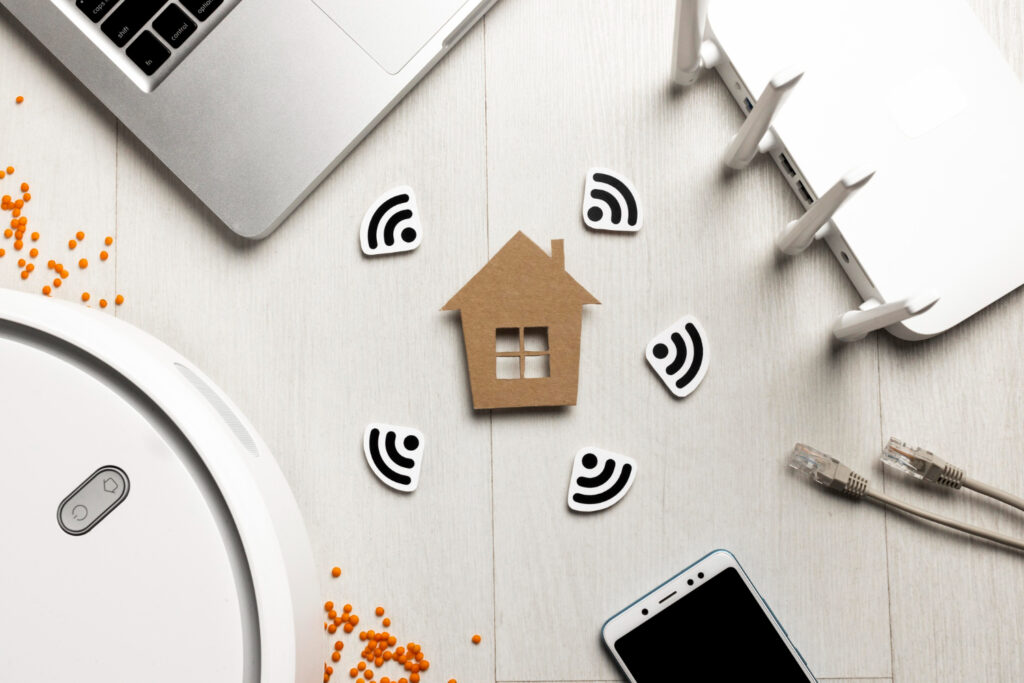The Technology Blog

How to Secure Your Home Network Against Cyber Threats
In an increasingly digital world, home networks have become gateways not only to convenience but also to potential cyber threats. From smart devices and work-from-home setups to online banking and personal communications, your network holds sensitive data that must be protected.
This guide provides practical, actionable cybersecurity tips to strengthen your home network security, defend your data, and protect your Wi-Fi against malicious attacks. With rising incidents of cybercrime targeting home users, now is the time to take control of your digital safety.
Pro Tip:
Change your router’s default login credentials immediately after setup. Factory-default usernames and passwords are widely known and often the first targets for cyber attackers.
Quick Guide: Securing Your Home Network

- Rename your Wi-Fi network (SSID) Avoid using personal details like your name or address.
- Use a strong, unique password for your Wi-Fi: Combine upper- and lowercase letters, numbers, and special characters.
- Enable WPA3 or WPA2 encryption: This ensures all data exchanged over your Wi-Fi is encrypted.
- Update router firmware regularly: Manufacturers release patches to fix vulnerabilities. Always apply them.
- Install firewall and antivirus software: Protect all devices on your network from malware and unauthorised access.
Important:
Avoid using open or unencrypted Wi-Fi networks, especially for sensitive activities like banking or work. Always disable remote router access unless necessary, and never share your Wi-Fi password casually.
Understanding the Need for Home Network Security
Cybersecurity isn’t just a concern for businesses any more. Home networks are now prime targets for hackers, especially with the growth of smart homes, remote work, and online financial activities. Threats like malware, phishing, and data breaches can easily originate from unsecured home Wi-Fi networks.
By securing your home network, you’re safeguarding not just your data, but also your identity, finances, and privacy. A few deliberate actions can dramatically reduce your exposure to cyber risks and give you peace of mind in your digital environment.
Essential Home Network Security Practices
1. Change Default Settings
- Router name (SSID): Use something neutral.
- Admin credentials: Replace factory defaults with strong, unique usernames and passwords.
2. Strengthen Wireless Encryption
- Use WPA3 encryption if supported or WPA2 as a fallback.
- Disable WEP (outdated and easily broken).
3. Regularly Update Firmware
- Set a calendar reminder to check for firmware updates every few months.
- Some modern routers allow automatic updates, so enable this feature if available.
4. Segment Your Network
- Use a guest network for visitors or smart devices. This keeps your primary devices on a separate, more secure layer.
- Avoid connecting sensitive devices (e.g., laptops, NAS) to insecure or IoT-heavy segments.
5. Enable Network Firewalls
- Most routers come with a built-in firewall—make sure it’s turned on.
- You can also install a software firewall on individual devices for layered protection.
Advanced Cybersecurity Tips
- Disable WPS: This feature is convenient but makes brute-force attacks easier.
- MAC Address Filtering: Restrict which devices can connect to your network by whitelisting their MAC addresses.
- Use VPNs: A virtual private network encrypts your internet traffic, especially useful for remote work or when using public networks.
- Monitor Connected Devices: Regularly review your router’s device list to detect unauthorised access.
Securing Smart Home Devices
Smart TVs, speakers, thermostats, and cameras are convenient—but also potential vulnerabilities. Secure them with these steps:
- Change default login credentials on each device.
- Keep firmware and apps updated.
- Connect smart devices to a separate guest network.
- Disable unused features like voice assistants or remote access when not needed.
Best Software for Home Cybersecurity
Here are reliable tools that enhance your home network’s security posture:
- Antivirus & Antimalware: Bitdefender, Norton, Kaspersky
- Password Managers: LastPass, Bitwarden, 1Password
- VPN Providers: NordVPN, ExpressVPN, ProtonVPN
- Router Security Software: Asus AiProtection, Netgear Armor
These tools offer an additional layer of defence against common online threats.
Frequently Asked Questions

1. How often should I change my Wi-Fi password?
It’s recommended to change your Wi-Fi password every 3 to 6 months. You should also update it immediately if you suspect that someone has gained unauthorised access to your network.
2. Is WPA2 still safe to use?
Yes, WPA2 is still considered secure for most home users. However, WPA3 is the latest and most robust encryption standard. If your router supports WPA3, it’s best to enable it for improved protection.
3. Can a neighbour hack into my Wi-Fi network?
If your Wi-Fi network uses weak encryption or a simple password, it’s possible for someone nearby to access it. To prevent this, use WPA2 or WPA3 encryption and a strong, complex password that’s difficult to guess.
4. Do all smart home devices pose a security risk?
Yes, any device connected to your home network—smart TVs, cameras, thermostats, and more—can be a potential entry point for cyber threats. Secure these devices with firmware updates, strong credentials, and isolation on a guest network.
5. Should I be using a VPN at home?
Using a VPN at home is optional but beneficial, especially if you handle sensitive information, work remotely, or want to prevent your ISP from tracking your activity. A VPN adds an extra layer of encryption to your internet traffic.
Making Home Network Security a Daily Priority
Securing your home network is not a one-time task—it’s a continuous commitment to digital safety. In an era of increasingly sophisticated cyber threats, proactive measures can prevent major disruptions and protect your personal and financial data.
With the right configuration, regular updates, and responsible online behaviour, you can transform your Wi-Fi into a secure, resilient foundation for your digital life. This guide gives you everything you need to enhance your home network security and confidently enjoy the internet.









